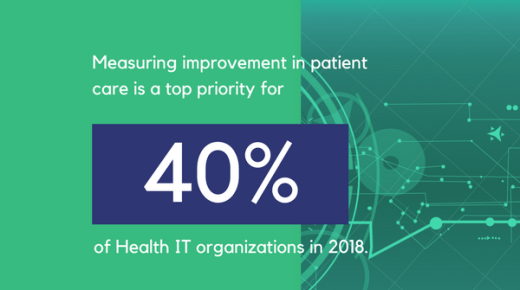The Stoltenberg Blog
Healthcare IT insights for competitive value-based care strategy
Insights From the Sixth Annual Health IT Industry Outlook Survey
By Shana Tachikawa
Over 300 HIT professionals shared their insights in the sixth annual Health IT Industry Outlook survey. The results focus on health IT leaders working collaboratively to stay on top of evolving staffing, EHR system and technological advancement trends for operational efficiency and proactive patient care. Hospital IT departments continue to struggle with strained resources and competing projects. As the industry pushes forward with value-based care, the ability to optimize technology and workflow within an organization is vital for success. Here are four key takeaways from the survey:
- Need for a cross-disciplinary team
Within the survey, measuring improvement in patient care quality was rated as the top business objective (40 percent) by health IT leaders. Outdated passive measurement processes no longer work in today's complex health systems. Considering competitive pressure in the new healthcare landscape, each hospital department must eliminate communication silos for a cohesive strategic conversation. To proactively establish efficient workflow, reporting needs and streamlined communication, create a cross-disciplinary team from all areas impacted by a new or optimized EHR system. Healthcare organizations need to look at the full picture of patient care to make proactive decisions.
Image: Stoltenberg Consulting - HIT staffing solutions
Optimizing IT/EHR performance (32 percent) and overcoming IT staff shortages (31 percent) were cited almost equally as the most significant challenges among survey participants. To strategically address healthcare IT staffing challenges, identify support gaps by creating a visual support map covering all facilities, applications and tools impacted by a new EHR or large-scale IT deployment. You can be creative in staffing by looking to local sources such as area colleges to utilize students in IT, healthcare administration, education, nursing or healthcare-related programs. This can be helpful during short-term projects like system go-lives or vendor upgrade support. - Integration for quality care improvement
Clinical application and implementation support (32 percent) remain the top IT outsourcing requests, followed by hospital IT service desk support (28 percent). While EHR adoption is nearly universal across the country, there is much more depth to a full system implementation than an initial go live. Integration is essential for improving care quality and ensures that health organizations have a comprehensive, accurate and reliable perspective on their care performance reporting. HIT leaders can combat health system interoperability challenges by focusing on tight integration of IT platforms and data across internal hospitals, practices, providers and even patients at home. A clinically consultative HIT service desk can help identify siloed issues with workflow and end-user errors while serving as a single source of contact. - Making MACRA a habit
Finally, the survey found that most organizations stills struggle to align reporting priorities with practices within year 2 of MACRA. Forty percent of survey participants reported feeling underprepared for year 2, and only 12 percent felt very prepared. When organizations are short-handed for IT support and optimization, it can impact other initiatives such as MACRA reporting strategy. By making the data capture and analysis more automated and consistent, preparation can be easier. The result will be more detailed documentation, better EHR utilization and QPP category maximization – making strategic MIPS participation a more simplified process.
Stay tuned for additional healthcare IT industry insight.